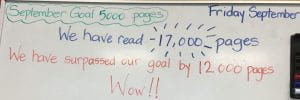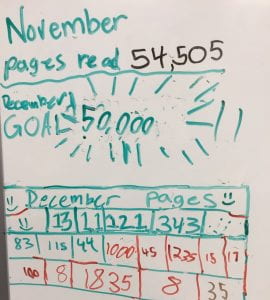September 9th was the day I sat in the office talking about my professional growth plan for the upcoming year. Little did I know then how much my teaching life would change for the better and all because of global connection.
After my meeting, I initially thought about changing my topic for growth. Luckily I stuck with global connection, and I started to connect with others; through twitter, twitter chats, direct messages, Google hangouts and Facebook. I became excited and energized with teaching and tried new activities and lessons with my class.
My students were motivated and engaged each time we made global connections. They became excited about learning and sharing with others. We worked on the Student Blogging Challenge and put our work out there for others to enjoy. We loved visiting other blogs and leaving comments for other students taking part in the challenge.
As a teacher, I took part in the Student Blogging Challenge by becoming a volunteer student commenter. I was motivated to volunteer after seeing how excited my students were last year when they received comments on their blog. I wanted to be able to get other students excited by seeing comments about their work. Each week I had the opportunity to visit many different blogs and encourage students to keep up their blogging. Through visiting so many different blogs, I discovered a terrific school in Vancouver that delivers a unique and amazing program for their Grade 8 classes. Some of the students in this program have visited our blog, and my students have visited their blogs.
The Global Read Aloud Project was another project that had the students and I connecting globally. We participated in two Google hangout sessions and found out about each other and where we live in North America. The students and I loved seeing the other classes and exchanging our thoughts and feelings about the book.

I think the connection that my students have loved the most is Global Maker Day where we watched a live stream throughout the day. My students loved watching the students from Scheck Hillel Community School make their presentations. They also loved creating and designing their projects and sharing them with other children via Flipgrid.

Twitter remains by far the most instrumental part of my global connections. I joined my first twitter chat in September and immediately felt comfortable with the whole process. I get to participate in the comfort of my home and share resources with veteran educators. I like to call a twitter chat a virtual staffroom where the ideas flow. I have participated in chats on math, maker spaces, virtual field trips, Google slides, and the hour of code.
I have also kept in contact with people I have met at BLC’19 and made wonderful new contacts because of them. These contacts have let me know about special events happening; I got to watch some sessions on digital citizenship from Russia and Texas. I had the chance to connect with a school from the Netherlands and get in touch with them to help with blogging. Global Maker Day came to me through twitter as did so many other virtual summits and chats.
Global connection helps teachers and students learn about the world around them. It makes everyone excited to learn and share their work with others. I am hoping that the rest of this school year is filled with global connections in fourth-grade. The students and I have some great ideas and projects planned and we could not be more excited to connect.




